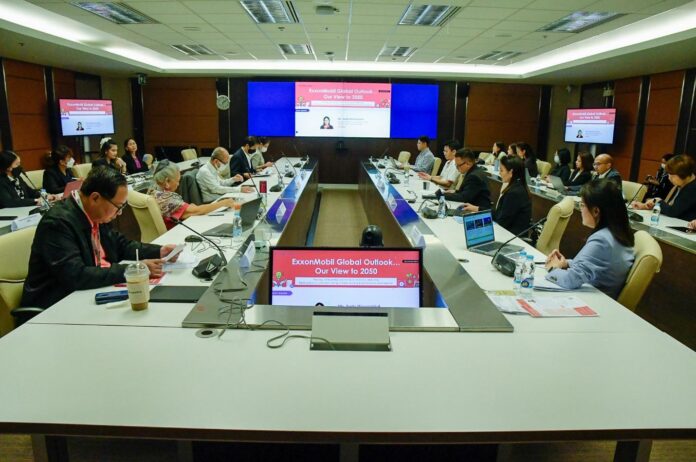
All energy types needed to raise living standards and reduce emissions
Suda Ninvoraskul, country manager and managing director, ExxonMobil Limited, shared ExxonMobil Global Outlook: Our View to 2050 in a recent public lecture held by the Petroleum Institute of Thailand (PTIT) for online and face-to-face audiences. ExxonMobil Limited is an affiliate of Exxon Mobil Corporation (ExxonMobil), a world-class US energy company.

More people, more prosperity, and more energy with lower emissions
ExxonMobil Global Outlook expects the world’s population increases from about 8 billion people today to nearly 10 billion in 2050 – a rate of about 1 million people every six days – and the global economy doubles. These two factors will lead to the need for 15% more energy to support a growing population with rising living standards – many of whom live in the developing world.


The Global Outlook projects that the biggest change in the world’s energy mix between now and 2050 will be a significant increase in solar and wind, along with a significant reduction in coal.

Energy from solar and wind is projected to be more than quintuple, from 2% of the world’s supply to 11%. Coal will increasingly be displaced by lower-emission sources of electricity production – not just renewables but also natural gas, which has about half the carbon intensity of coal. Overall, electricity use grows 80% by 2050.

Oil and natural gas are expected to make up a major part in the world’s energy supply at 54%. The utility of oil and natural gas in meeting the world’s needs remains unmatched. They are energy-dense, available, affordable, and essential raw materials for many products.
Oil use is expected to decline significantly in personal transportation. Still, it will remain essential for industrial processes and heavy-duty transport like shipping, long-haul trucking, and aviation, which underpin economic growth.

Natural gas use is projected to increase by more than 20% by 2050, given its utility as a reliable and lower-emissions source of fuel for electricity generation, hydrogen production, and heating for both industrial processes and buildings.

By 2050, ExxonMobil expects emissions to decline by 25%, but more is needed to limit warming to well below 2°C.


Three drivers will accelerate the energy transition
Suda closed her lecture with three key enables for successful energy transition – policy, technology, and market-driven solutions. All involve broad collaboration among governments, companies, universities, and others.

First, ExxonMobil believes clear and consistent public policy can incentivize lower-emissions solutions. Streamlined permitting is needed to build new solutions and the needed infrastructure.
Second, technology advances innovation to develop needed solution. An all-of-the-above approach to technology, where governments avoid picking winners and losers, will lead to the most cost-efficient solutions produced in a timely manner.
Third, to achieve global emission-reduction goals, the world will need to develop an economy that values and pays for emission reduction on a full lifecycle basis. This economy will need a transparent carbon price to incentivize consumer behavior and spur the carbon market.










































